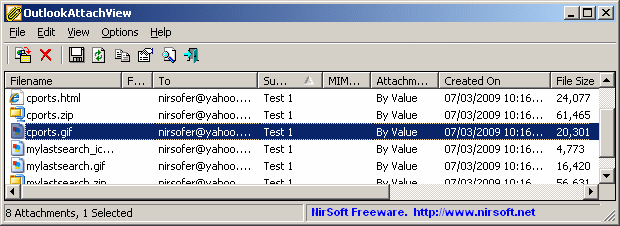Are you annoyed by those emails coming with huge attachments? Are you often running out the inbox space? Even frequent archiving does not help? OutlookAttachView is the life saver. “OutlookAttachView scans all messages stored in your Outlook, and displays the list of all attached files that it finds. You can easily select one or more attachments and save all of them into the desired folder, as well as you can delete unwanted large attachments that take too much disk space in your mailbox. You can also save the list of attachments into xml/html/text/csv file.”
Month: January 2013
Interesting Lecture – The Impact of Social Computing: Challenges and Opportunities for Europe
by Yves Punie.
http://videolectures.net/forum2010_punie_tisc/
“Apart from the unexpected and impressive growth of social computing applications there are two fundamental aspects of SC that are expected to lead to major impacts on society and the economy: (1) the fact that users are taking the lead in the way products and services are shaped and used, leading to user empowerment and to users taking up taking up new roles in the digital society and economy and (2) the trend towards peer-produced resources and towards harnessing collective knowledge whereby the sum of the shared contributions from people are providing more added value than could be produced by groups, networks or communities that are small, closed and inwards-looking.
Social Computing poses the risk of a new ‘digital divide’, as new applications and technologies arise and people need to learn the critical skills and knowledge about information accuracy, reliability, quality of content. Major threats related to security, safety and privacy are also emerging, either new or more threatening than before.
If well managed however, social computing can have an important positive impact on the key challenges the EU is facing for 2020 and lead to increases in public service quality and democratic governance and business productivity.”
Socialize or Perish: Relating Social Behavior at a Scientific Conference to Publication Citations
Scientific progress depends on communication and exchange of ideas. Among others, scientific conferences are considered to be the primary venues for connecting with fellow scientists. Would those who are more active in the conference have more impact in terms of the citations today? In this paper we present an analysis of human behavioral data collected at a scientific conference by means of SpotMe devices distributed to the participants. These handheld devices allow conference participants to connect to others, receive alert once others are in the proximity, and to send messages. We complement the behavioral data gathered at the conference with measures of scientific productivity over nine years following the conference, and draw conclusion out of this joint data set. It is confirmed that social activity during the conference is significantly correlated with citation counts for full papers.

FULLTEXT: PDF HTML REFERENCE: BibTeX EndNote
DOI: 10.1109/SocialInformatics.2012.48
Tangible User Interfaces: Past, Present and Future Directions
Interesting article by Orit Shaer and Eva Hornecker. “In the last two decades, Tangible User Interfaces (TUIs) have emerged as a new interface type that interlinks the digital and physical worlds. Drawing upon users’ knowledge and skills of interaction with the real non-digital world, TUIs show a potential to enhance the way in which people interact with and leverage digital information. However, TUI research is still in its infancy and extensive research is required in order to fully understand the implications of tangible user interfaces, to develop technologies that further bridge the digital and the physical, and to guide TUI design with empirical knowledge.
This paper examines the existing body of work on Tangible User Interfaces. We start by sketching the history of tangible user interfaces, examining the intellectual origins of this field. We then present TUIs in a broader context, survey application domains, and review frameworks and taxonomies. We also discuss conceptual foundations of TUIs including perspectives from cognitive sciences, psychology, and philosophy. Methods and technologies for designing, building, and evaluating TUIs are also addressed. Finally, we discuss the strengths and limitations of TUIs and chart directions for future research.”
Orit Shaer and Eva Hornecker (2010) “Tangible User Interfaces: Past, Present and Future Directions”,
Foundations and Trends® in Human-Computer Interaction: Vol. 3: No 1-2, pp 1-137.
http://dx.doi.org/10.1561/1100000026
